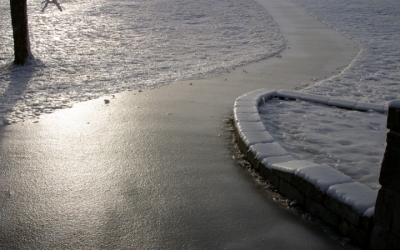
Ice is slippery because there is a very thin layer of liquid water on its surface. Also because, unlike solids, liquids are mobile. Inside the ice, water molecules form a well-organised rigid structure. But on the surface, this structure does not hold and the water molecules get loose. This forms a liquid layer where water molecules can move, making the surface slippery. But ice is not always slippery. At very low temperatures – say, at-50°C, the liquid layer disappears and ice becomes completely solid and hence not slippery. It is notably impossible to skate at this temperature.
Mischa and Daniel Bonn, who are brothers, published a paper May 9th in the Journal of Chemical Physicsdescribing the surface of ice. Rather than a layer of liquid wateron the surface of ice, they found, there were loose water molecules. Mischa Bonn compared it to a dance floor that is “filled with marbles or ball bearings.” Slipping across the surface of the ice is simply “rolling” on these molecular marbles.
Ice has a very regular, neat crystal structure, where each water molecule in the crystal is attached to three others. The molecules on the surface, however, can only be attached to two others. Being so weakly bonded to the crystal allows these surface molecules to tumble, and attaching and detaching themselves to various sites on the crystal as they move.
Even though slipping on ice is caused by essentially rolling over these water molecules, this layer of molecules is not the same as a layer of liquid water. These molecules and the slipperiness exist at temperatures far below water’s freezing point. In fact, the way these molecules move so freely and diffuse across the surface actually makes them look more like a gas, Daniel Bonn said.
Picture Credit : Google




